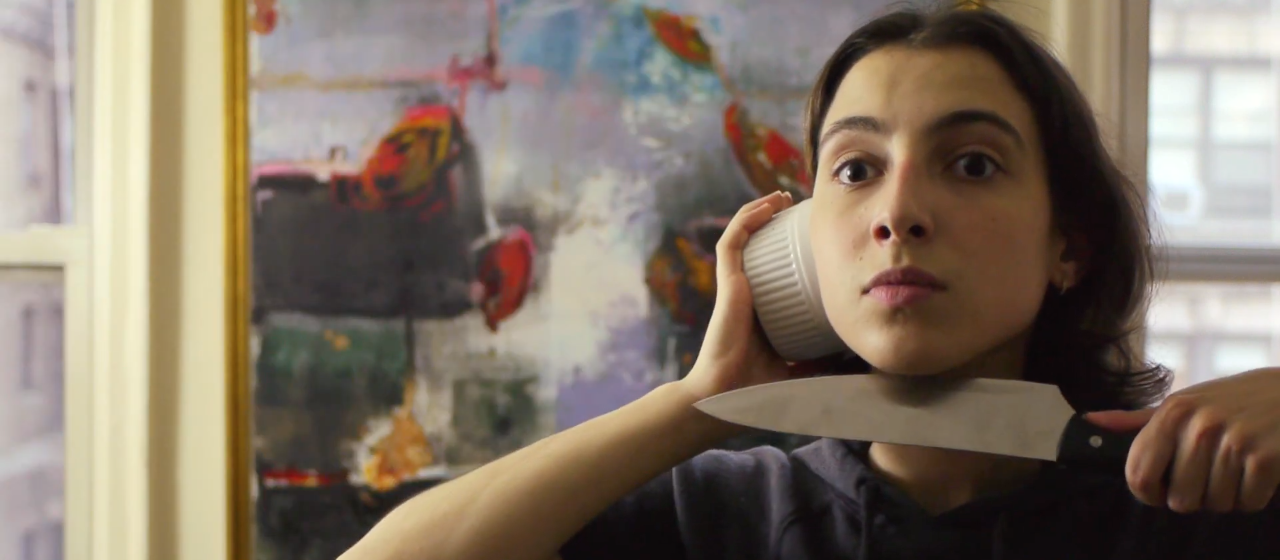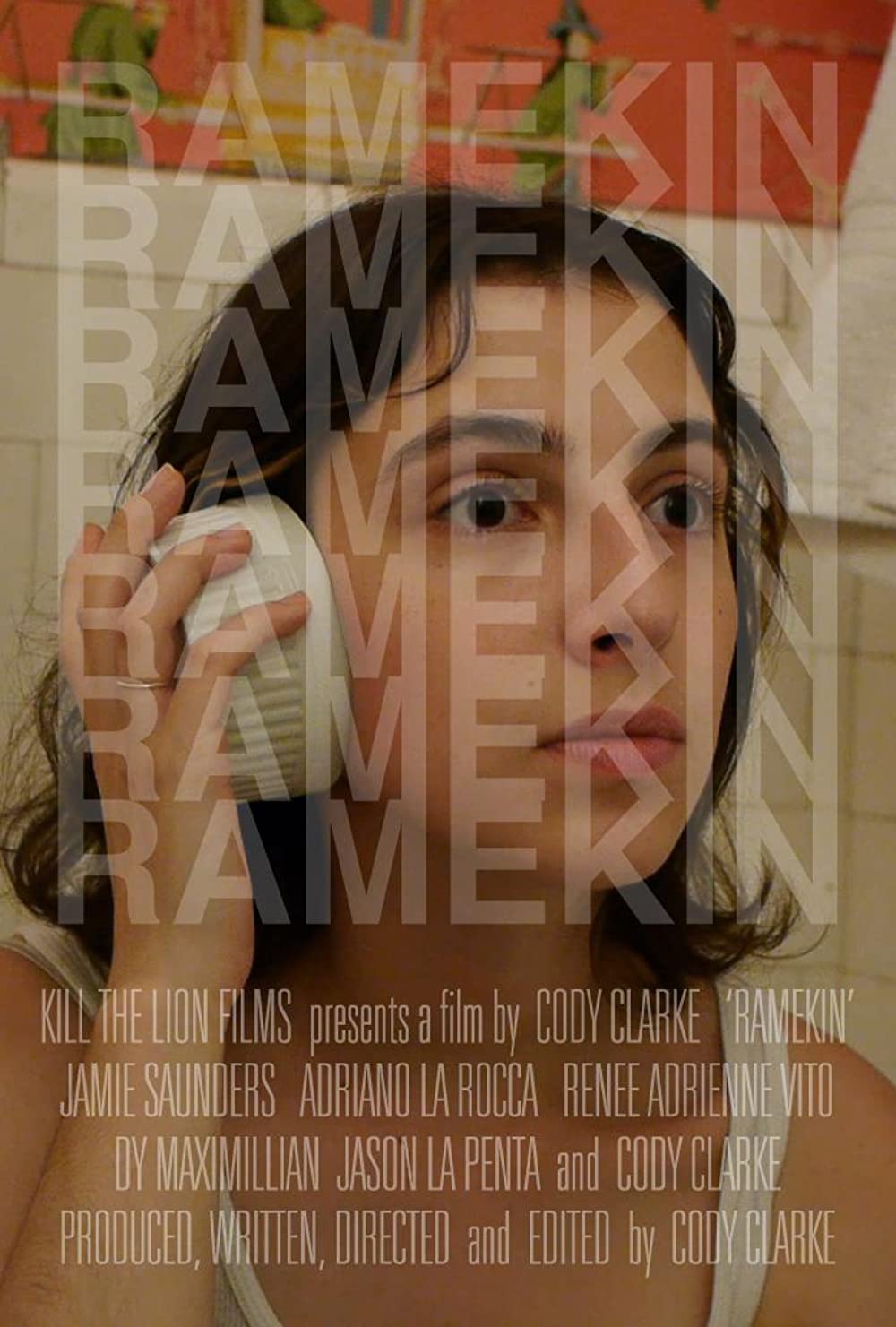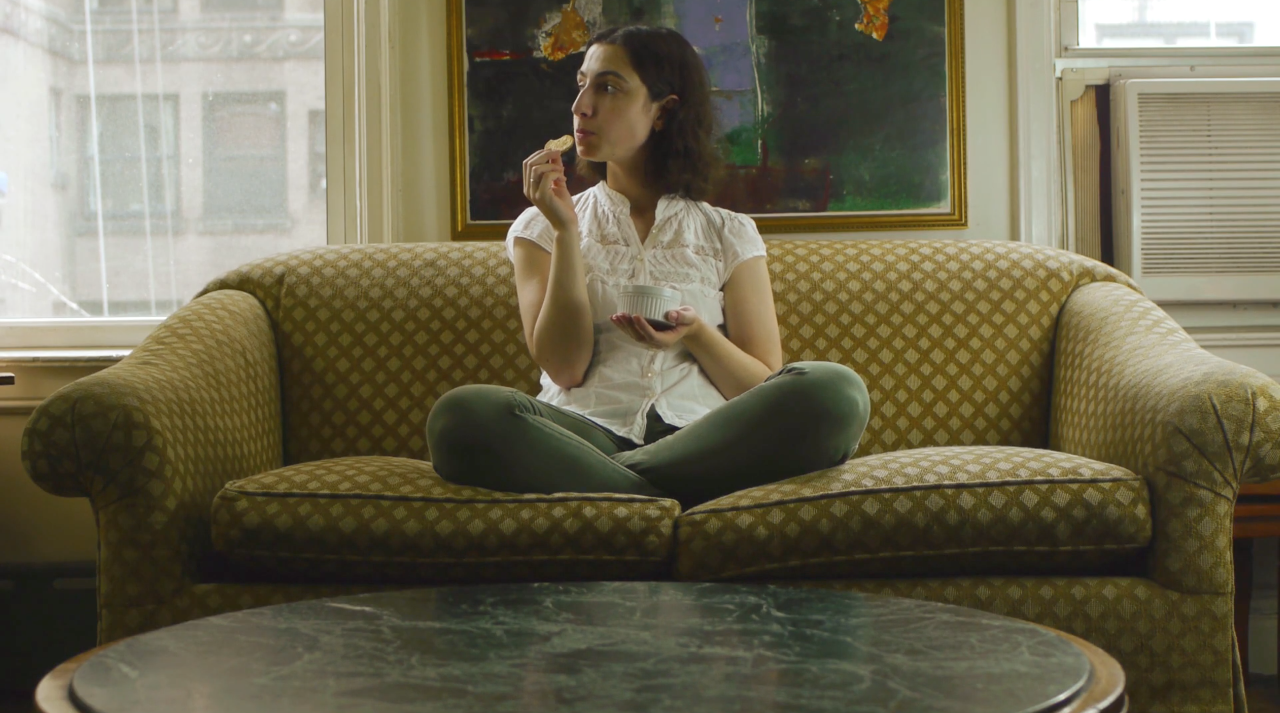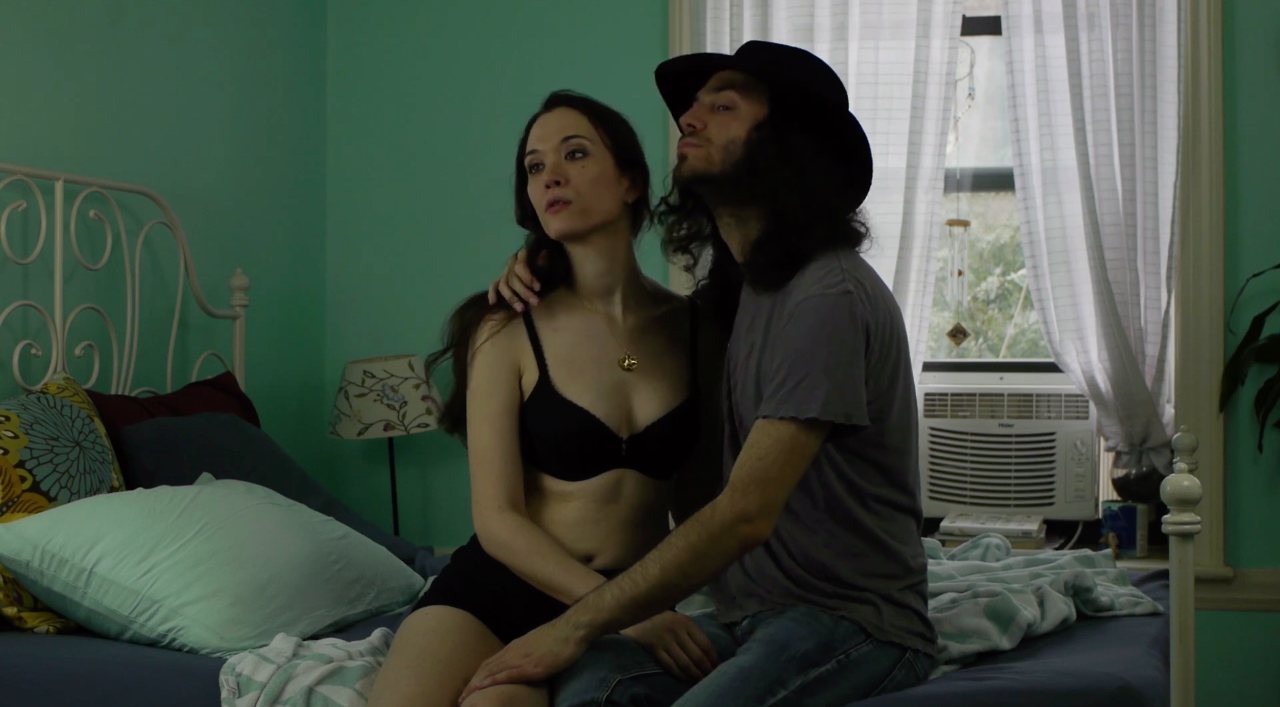

“Has anyone ever extracted beauty from you and painted the world with it?”
Cody Clarke will always have detractors because he employs an unsophisticated aesthetic. He has a basic competence behind the camera but is evidently uninterested in a personal technical evolution (although he’s a huge proponent of the technological evolution that has given anyone with two pennies to rub together the ability to shoot a film for next to nothing). Instead of pushing into new realms of visual style, Clarke has focused on sharpening his storytelling abilities, developing his quirky brand of dark observational humor, and getting myriad projects from concept to release in a matter of months. Ramekin, his third feature, finds his building-block style in full force—static frames, plain compositions, stock sound effects, uncanny valley ADR. The seams are hard to miss. And yet, that chintzy homespun quality meshes quite well with the surreal horror-comedy tone of the story, a bizarre tale of a young woman falling under the psychic influence of a sentient porcelain soufflé dish. An uneven work, it fails to build up to the frenzy one might expect from its off-the-wall scenario, but several high points come when the story leans heavily into the bizarre nature of the premise or makes momentary comic diversions into the weirdest depths of Clarke’s curious mind. Though Ramekin will not be mistaken for the work of a seasoned pro working with the support of a veteran team—indeed, when the credits role Clarke’s name is everywhere: producer, writer, director, he’s even got a bit part as Make Out Guy—there’s no mistaking the practical ingenuity of Clarke’s screenwriting nor his subversive comedy (though I think his humor may not have much mass appeal).
Jamie Saunders stars as Emily, a young woman subletting an apartment in New York City who finds her roommates obnoxious and overbearing.1 Fortuitously, morbidly, her reclusive grandmother dies and Emily is given the opportunity to move into her vacant apartment. Jumping at the chance for some peace and quiet so that she can explore her artistic side without banal interruptions, she moves into her grandma’s old lodgings. Shortly after arriving, though, she discovers that she has a new roommate, a little white dish—a ramekin—with a mind of its own. It can do all sorts of things like play music, produce cupcakes, make money. It can even hold a conversation that’s akin to playing twenty questions, answering in the affirmative by scraping an inch along the table or remaining stationary to answer in the negative. In fact, Emily enjoys the ramekin’s company to such a degree that she claims her “grandma dying is literally the best thing to happen in the history of the world.” Initially amusing if slightly confounding, the tone of the film, like Emily’s relationship with the ramekin, cheerfully slides from humorous to horrific as the evil dish gradually asserts its diabolical will over her. It won’t let her leave the apartment, it won’t let her shower in privacy, it won’t let her spend time with her best friend Jane (Renee Adrienne Vito). When a hapless young man, a friend of dead grandma’s, tries to befriend Emily, the ramekin demands the unthinkable: the blood of another human.

Blood is the most important thing to be removed from the body, more important than anything else. The world should be covered in red. Every being with blood in it should be opened up like the paint cans that they are and every inch of the earth covered with their paint.
I found the most delightful parts of Ramekin to come from Clarke’s screenplay. Not only does he appear in a tastefully brief cameo, but he also puts a collection of his own poetry in Emily’s hands, the words “greatest living poet” visible on its cover. He mines the premise for humor with abandon, generating laughs out of Emily’s initial reaction to the ramekin’s sentience—“move if you just wanna coexist or whatever”—and their earnest one-sided discussion about her hesitance to get naked in its presence. Indeed, much of the fun stems from watching Clarke developing an ad hoc pocket mythology for this mythical terror he’s pulled out of thin air. There’s an abundance of flat lines but these are overcome by several offbeat jokes that land well. For instance, at one point Emily recites a poem that she’d written to Mark (Adriano La Rocca); it’s clearly about murder, but when Mark hesitantly asks what it means to her she gets defensive. “Art is just art. Art means whatever you think it means.” Later, after Emily has apologized to Jane for telling her that she has an objectively stupid face, the ramekin prompts Emily to murder her best friend. Emily asks Jane to close her eyes, but when her phone rings, she opens them to find Emily standing over her with a knife. The beginning of their conversation (slightly condensed below) is a wonderful bit of black humor, highlighted by Jane’s tongue twister.
J: What did you get, cake?
E: No.
J: Pie?
E: No.
J: Brownies?
E: No.
J: What then?
E: This.
J: Oh man. I didn’t know you knew I needed a new knife.

Although by and large Clarke wears each of his various hats just long enough to get the job done, he does show off a few tricks. In one instance he takes the non-diegetic soundtrack (solid indie rock from Girls Who Care) and shifts it to diegetic. In another, he reuses the same exact footage multiple times in succession—the ramekin moving to its preferred position on the dining room table and Emily returning it to the drying rack—to gently detach his film from reality. While I admire the willingness and desire to have a hand in so many areas of the production, so much of it is rendered in a bare bones style that one wishes some things had been delegated and thus received more attention. And yet, it’s easy to understand the pride that comes from having control of every aspect and slapping your name all over the end credits.
More weird than either funny or scary, Ramekin is an amusing little oddity that utilizes the reality of its backpack production to further its own ends. The harsh contrast between the dead silence and extreme overdubs and stock sounds, the awkward insanity of Jamie Saunders conversing shot-reverse-shot with a porcelain dish, the noticeable lack of camera movement—all of these elements may have been dictated by budget constraints, but they work within the context that Clarke created with his bizarre story.
1. There’s a small cameo from Anthony Kapfer, star of Clarke’s next film Mute Date, who is found lounging on the kitchen counter munching on Emily’s labeled box of cereal. He is appropriately credited as Cereal Guy. Clarke and his girlfriend/collaborator Chloe Pelletier also have a cameo as a couple who make themselves at home for some canoodling in Emily’s bedroom.